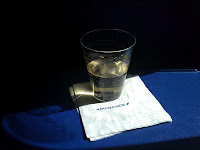One ambition for our School is to become internationally recognised for the quality of the educational provision that effectively prepares individuals for nursing, midwifery, social work and counselling practice. We have many colleagues in the School who are actively engaged in taking this aim forward. Collectively we are engaged with a range of international projects that address preparing health and social care professionals in providing more person centred end of life care, adult social and health work for older people, particularly those who are vulnerable, primary health care in developing nations, and what it is we might learn from the ancient Greek notion of doula in terms of promoting safe child birth.
And this week I was able to do my bit. Yesterday I returned from spending a couple of days in Lasi (pronounced lashy), the second largest city in Romania. It was a tortuous process to get to and from Lasi. The journeys involved early morning dashes to airports, terminal commuting and 3 flights on each days travel. However this somewhat arduous sounding trek was still a much easier journey than the one colleagues from Hungary made to get to the workshops. They travelled from Budapest by car. This was a journey of some 800 km, which took them over the Carpathian Mountains (which at this time of the year are still covered in snow) and on a trip that took the best part of 2 days to complete (each way!). It was cheaper for the 3 of them to do this, and stay overnight enroute, than it was to purchase an airline ticket for just 1 of them. I think it showed fantastic commitment to the project and what we are trying to achieve.
However, I think it is a cost saving idea that possibly I won’t mention to our university Finance Director, although I am sure she would be delighted with the possibilities for making such savings. I of course, as per University policy, travelled economy rather than business class with Air France. But môn dieu, it was not the great experience I had been expecting. Almost unbelievably, Air France ran out of White Wine (Château Ducla) some 30 minutes out of Paris airport. That Air France could do this was for me completely extraordinary. However, I had to applaud their compensation strategy, which came in the form of a couple of glasses of champagne.
The reason for the travel was to attend the 4th workshop in series of workshops that form part of the EmpNurs Project. This is a project involving 7 EU countries who are working at empowering nurses through high quality mentorship programmes. We have reached the half way point and the workshop in Lasi was aimed at capturing progress to date. It was a great success, and the project is well on target, all objectives being achieved so far.
The meeting was also an opportunity to visit the local health care system. We were able to speak with qualified nurses, nurse managers, students and those involved in promoting the profession of nursing. We met in the main hospital in Lasi. All the Head Nurses came, and a large group of students also attended. Indeed, there were many more people wanting to come and talk about their experiences than there was room for in the lecture theatre. Interestingly, whilst the hospital facilities were different from those familiar to us in the UK, the issues of concern were the same.
What was good to be part of was the way in which the students and qualified staff alike were happy to engage in a vigorous debate of the issues. It was a forthright and honest debate of the way in which nurses need to think differently about how they are educated and prepared for contemporary practice. It was clearly empowerment in action!
And many thanks to Camelia and Ileana for making our stay in Lasi such a productive one. It’s tough to achieve what you achieved, so well done in making such a great contribution to the project.








.jpg)












